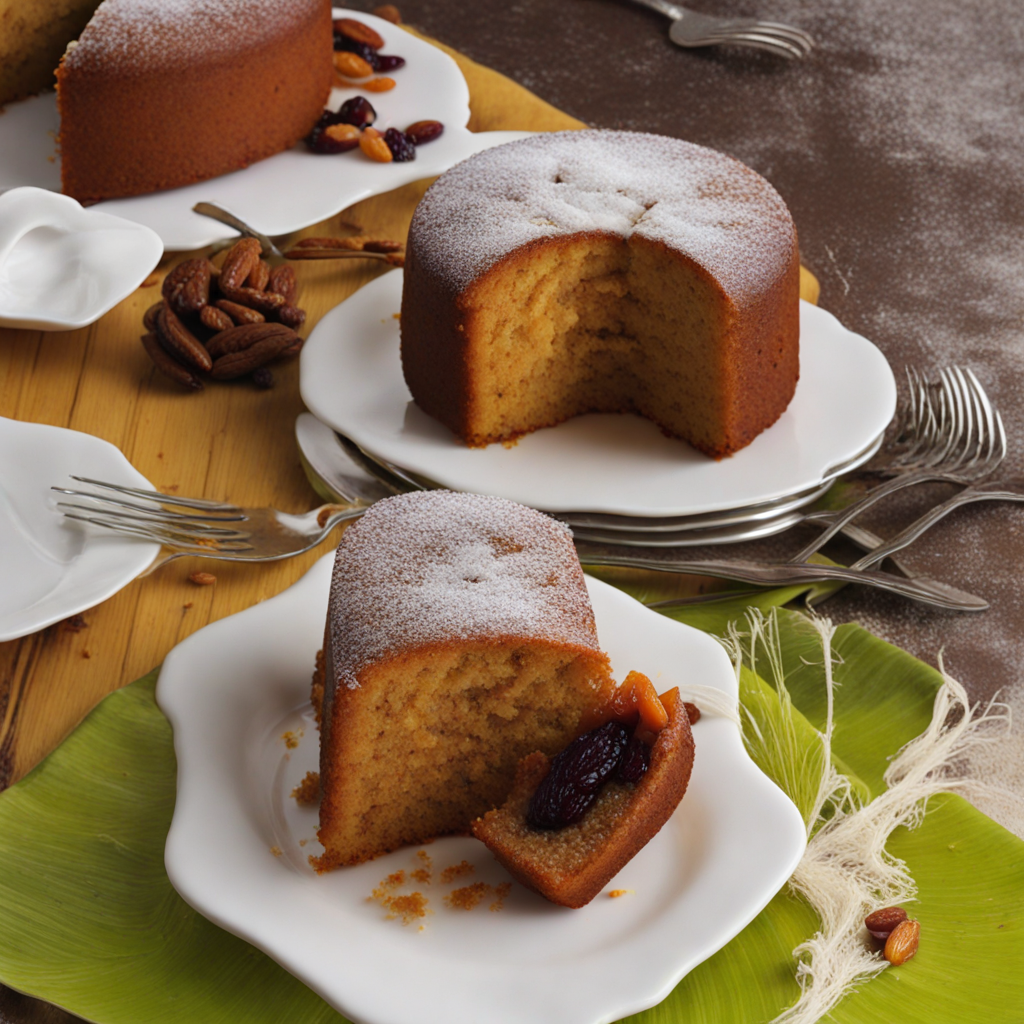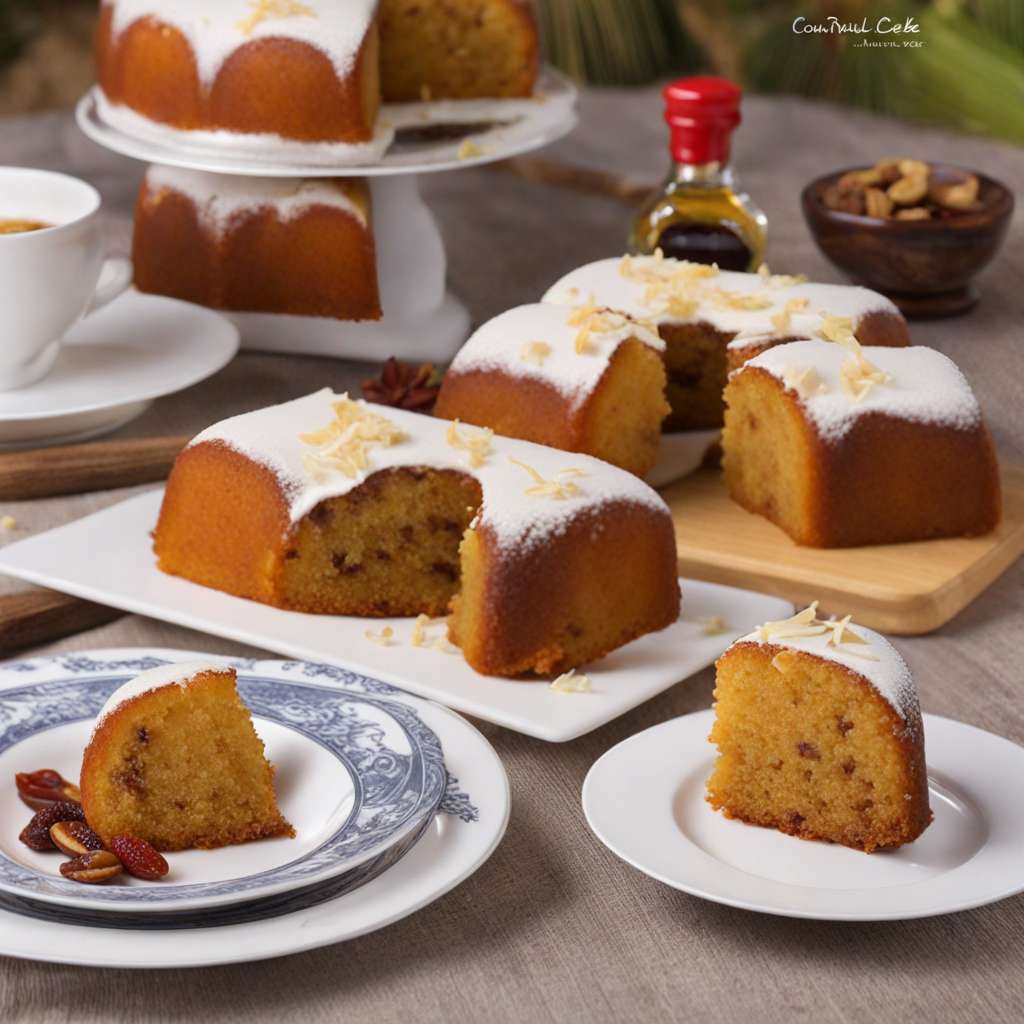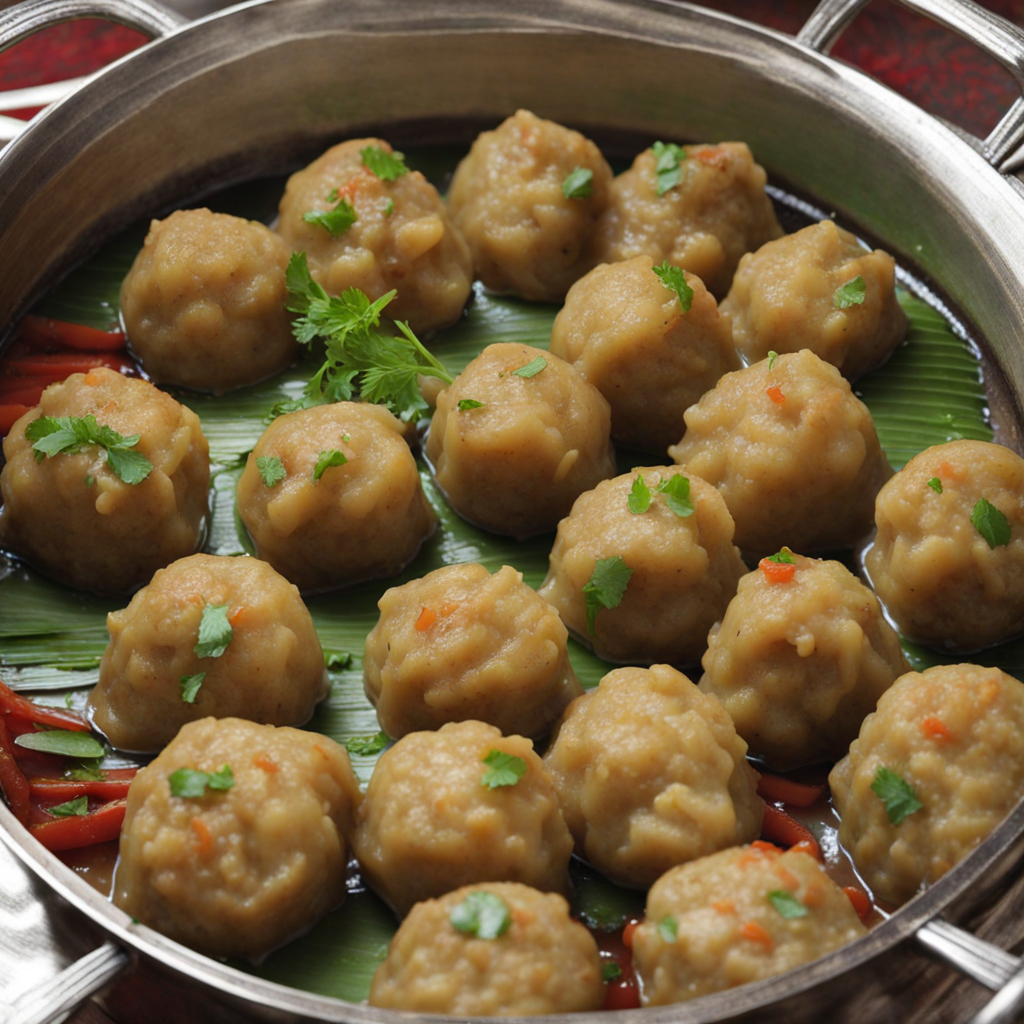Rum Cake
Rum Cake, a delightful dessert from Mauritius, is a moist and flavorful cake that perfectly embodies the island's vibrant culinary heritage. This indulgent treat is typically made with a rich blend of flour, sugar, eggs, and, of course, rum, which infuses the cake with a distinctive warmth and depth of flavor. The rum used often comes from the local sugarcane distilleries, contributing a unique character that reflects the island's tropical essence. The cake's texture is both dense and light, ensuring that each bite is a sumptuous experience. The preparation of Rum Cake often involves soaking the dried fruits, such as raisins, cherries, and apricots, in rum for several days before baking. This step not only enhances the flavors but also adds a delightful chewiness to the cake. Spices like nutmeg, cinnamon, and vanilla play a crucial role in elevating the taste, creating a harmonious blend of sweet and aromatic notes. Once baked, the cake is frequently drizzled with a rum syrup, intensifying its flavor and leaving a glossy finish that makes it visually appealing. Rum Cake is typically enjoyed during special occasions and festive celebrations in Mauritius, symbolizing warmth and togetherness. Its rich flavor profile and moist texture make it a perfect pairing with a cup of tea or coffee, inviting you to take your time and savor each bite. Whether served as a dessert at a family gathering or enjoyed as an afternoon snack, Rum Cake offers a truly unique taste that captures the spirit of Mauritius, making it a must-try for anyone looking to explore new culinary delights.
How It Became This Dish
The History of Gateau Rhum: A Sweet Slice of Mauritian Culture Origins Gateau Rhum, a beloved dessert from Mauritius, embodies the island's rich tapestry of cultures and culinary influences. The origins of this rum-infused cake can be traced back to the 19th century when Mauritius, known for its sugar plantations, became a melting pot of French, Indian, African, and Chinese cultures. The island's strategic location in the Indian Ocean made it a hub for trade, and as such, it attracted a diverse population which contributed to its unique culinary landscape. The cake itself is believed to have been inspired by the French "gâteau" tradition, particularly the moist, dense cakes that were popular in Parisian patisseries. However, the twist of using rum, a product of Mauritius' burgeoning sugar industry, marked a significant local adaptation. Rum production flourished in Mauritius due to the island's ideal climate and rich soil, which allowed for the cultivation of sugar cane. By the late 19th century, rum was not just a spirit but an integral part of the island's identity, often associated with celebrations and communal gatherings. Cultural Significance Gateau Rhum is more than just a dessert; it is a symbol of Mauritian hospitality and tradition. The cake is often served at family gatherings, weddings, and festive occasions, reflecting the island's communal spirit. Its preparation and sharing foster a sense of togetherness, making it a cherished home-baked item that connects generations. In Mauritian culture, food plays a central role in social interactions. The act of sharing Gateau Rhum is a way to express affection and generosity. It is common for families to pass down recipes, and this cake often becomes a beloved heirloom, with each family adding their own unique twist to the traditional recipe. The use of local ingredients, such as fresh fruits, spices, and of course, rum, speaks to the island's agricultural bounty and the creativity of its people. Ingredients and Preparation The classic recipe for Gateau Rhum features a moist sponge cake soaked in rum syrup, often enriched with butter, eggs, and sugar. The cake may also include grated coconut, sultanas, or other dried fruits, adding texture and flavor. The rum syrup is an essential component, typically made from dark rum, sugar, and water, which is poured over the warm cake to allow it to absorb the sweet, aromatic liquid, creating a rich, indulgent treat. The cake’s preparation varies across households, with some opting for a lighter, airier sponge while others prefer a denser texture. The versatility of Gateau Rhum allows for numerous adaptations, reflecting the personal tastes and traditions of different families. Over the years, bakers have begun to experiment with flavors, incorporating spices such as nutmeg, cinnamon, or vanilla, which further enrich the cake's flavor profile. Evolution Over Time As Mauritius moved through the 20th century, Gateau Rhum evolved along with the island's social and cultural changes. The post-colonial era saw a resurgence of pride in local traditions, and food became a means of expressing national identity. Gateau Rhum became more than a dessert; it was a representation of Mauritian resilience and creativity, a way to honor the island's diverse heritage while embracing modern influences. In the late 20th and early 21st centuries, the island experienced a tourism boom, which further popularized Gateau Rhum. Local chefs began to elevate the cake in fine dining establishments, presenting it in innovative ways and pairing it with local fruits or desserts. This exposure has helped to place Mauritian cuisine on the global culinary map, enticing travelers to experience the island’s flavors. Moreover, the rise of social media and food blogs has allowed home bakers to share their versions of Gateau Rhum, leading to a revival of interest in traditional recipes. This digital age has created a platform for Mauritians to celebrate their culinary heritage, and Gateau Rhum stands at the forefront of this movement. Recipes are shared, adapted, and cherished, keeping the tradition alive while allowing for personal expression. Contemporary Significance Today, Gateau Rhum is a staple in Mauritian households and is featured prominently in bakeries and restaurants across the island. It is often served alongside a cup of local tea or coffee, making it a beloved afternoon treat. The cake also holds a special place during festive seasons, such as Diwali and Christmas, where it is often made in larger quantities to share with family and friends. Culinary festivals in Mauritius now often highlight Gateau Rhum, celebrating its place in the nation’s gastronomy. Chefs compete to create the most exquisite versions, showcasing local ingredients and modern techniques. This not only preserves the traditional recipe but also inspires innovation, ensuring that Gateau Rhum remains a dynamic part of Mauritian culture. Furthermore, the global interest in rum has also contributed to the cake's popularity beyond Mauritius. As rum cocktails and culinary uses gain traction worldwide, Gateau Rhum serves as a delicious ambassador of Mauritian cuisine, inviting people to explore the island's rich history and cultural heritage. Conclusion Gateau Rhum is more than just a cake; it is a narrative of Mauritius, interwoven with the stories of its people, their traditions, and their resilience. From its humble beginnings as a French-inspired dessert to its contemporary status as a symbol of cultural pride and hospitality, Gateau Rhum has evolved while remaining true to its roots. It invites everyone to partake in a slice of Mauritian life, a delicious reminder of the island's rich history and the sweetness of community. As Mauritians continue to innovate and celebrate their culinary heritage, Gateau Rhum will undoubtedly remain a cherished symbol of their vibrant culture for generations to come.
You may like
Discover local flavors from Mauritius







